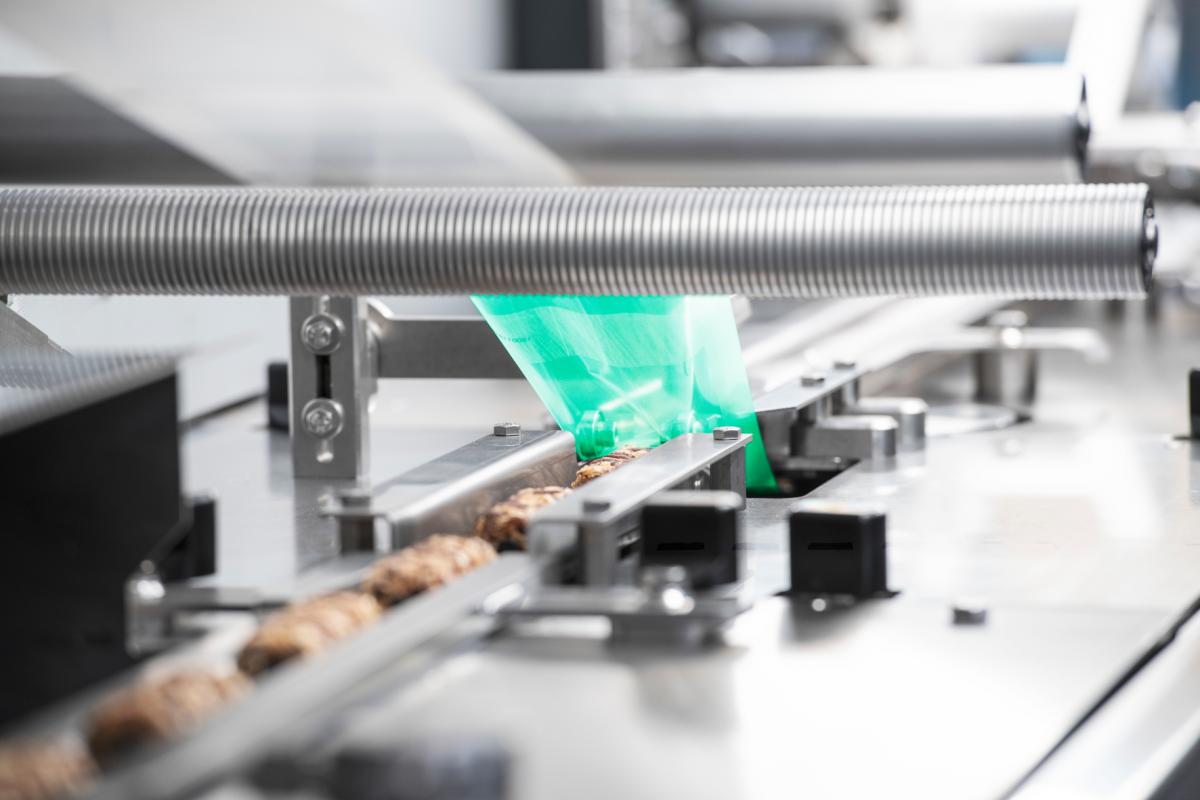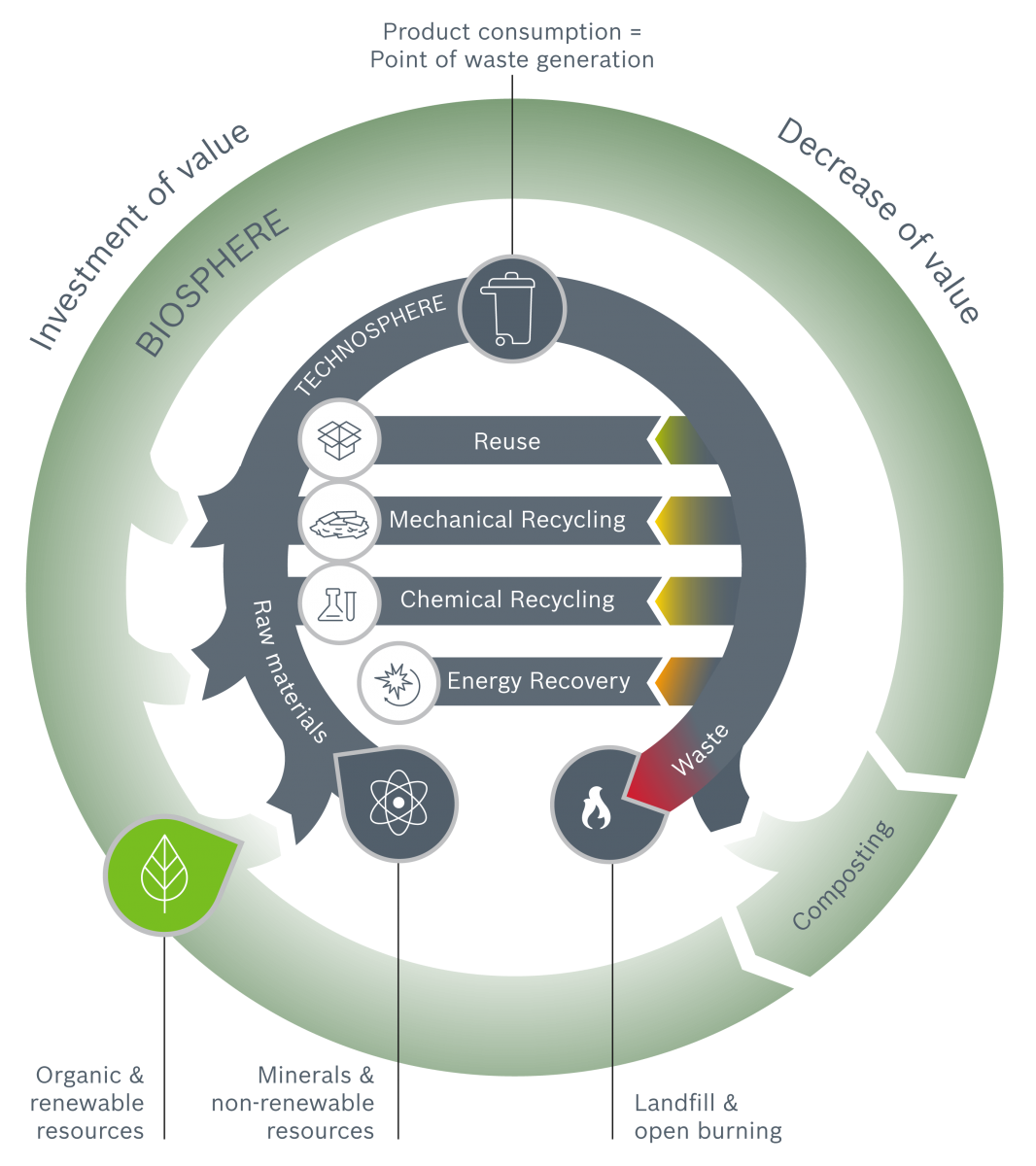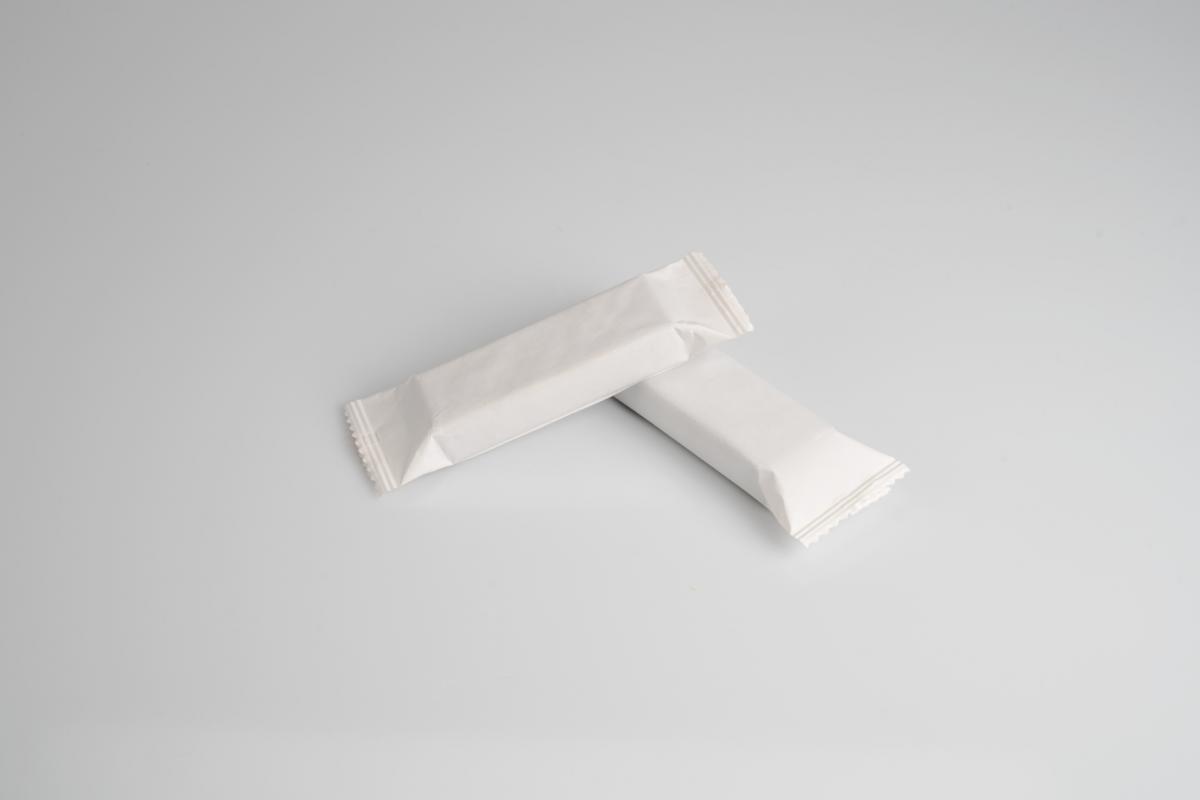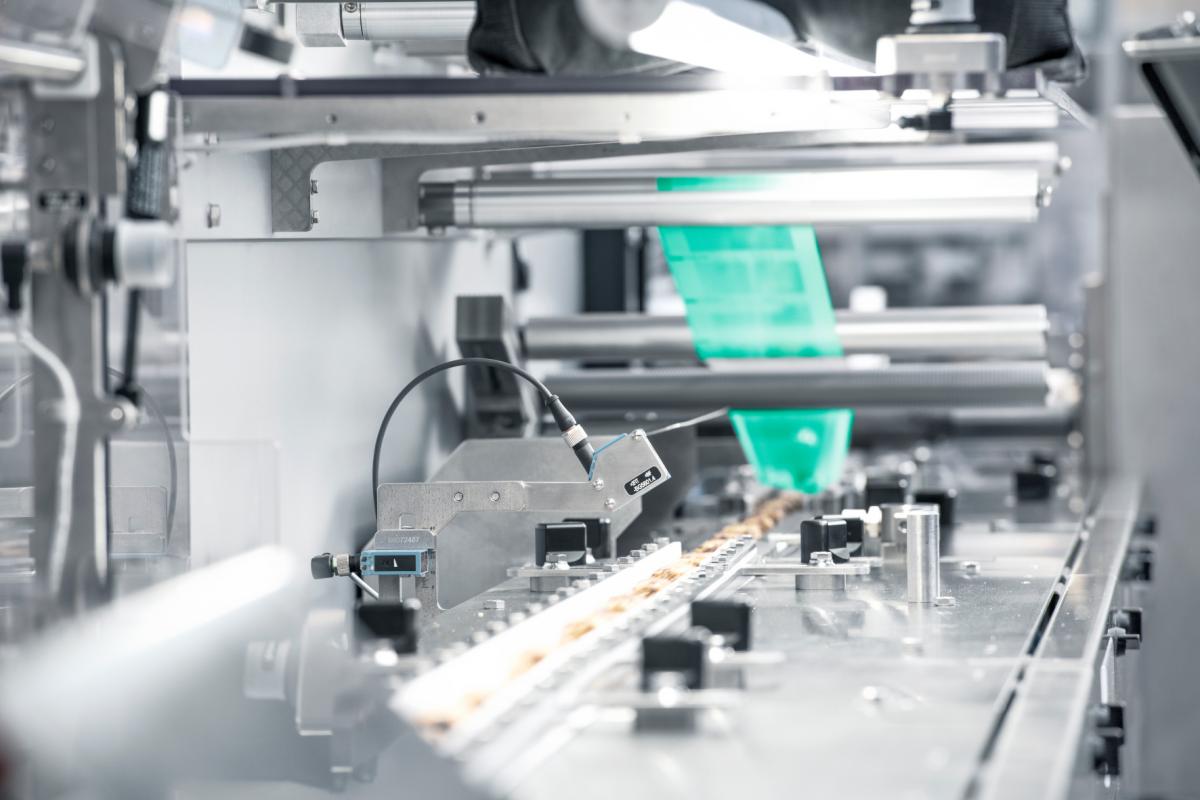Plastic flow wraps are widely used in the food industry and are very popular with both manufacturers and consumers. The films are easy to process, offer maximum product protection and act as a carrier for important brand and product information. When it comes to sustainability, however, there is room for improvement. The machine manufacturer Syntegon Technology, formerly Bosch Packaging Technology, is looking into alternatives to conventional flow wraps. The company strives to make sure these alternatives can be processed reliably and efficiently on packaging machines.
Whether used to package bars, cookies, baked goods, chocolate or pizza, flow wraps protect products effectively and are inexpensive as well as versatile. Since the beginning of the commercial use of plastics in the 1950s, the material has been improved continuously. This has resulted in the emergence of more and more composites, which combine the properties of various plastics to meet the high demands of the food industry. Composite films consist of several layers of different types of plastic, such as polyethylene (PE) and polyethylene terephthalate (PET). Each layer serves a specific purpose: The topmost layer of the film must be easy to print and at the same time able to withstand the sealing temperatures. A further layer serves as a barrier against external influences, such as humidity or heat, and ensures optimum product protection. This layer is crucial, particularly for highly perishable foods, as it prevents the product quality from deteriorating during transport to consumers. The innermost layer – the sealing layer – is thermally sensitive. It can be sealed efficiently through the application of heat and pressure.

Flow wrapping protects bars, cookies and crackers effectively and is inexpensive and versatile. The most commonly used material is polypropylene (PP).
Product protection vs sustainability
Flow wraps made from multi-layer composite films are thus true all-rounders. However, there is one substantial point of contention: while their optimum product protection properties help to avoid food waste, they simultaneously generate undesirable packaging waste.
It is very tricky to recycle composite films because the effort required to separate the film layers is comparatively high. Many countries either do not have the necessary recycling systems and processes in place, or the systems in these countries differ significantly from one another. For this reason, packaging material and packaging machine manufacturers are looking for alternative concepts to make flow wraps progressively more sustainable while still maintaining their product protection advantages.
The “Circular Economy” concept is a trailblazer on the road to sustainable packaging. This approach aims to close energy and material loops through the efficient use of resources, recycling and waste reduction. A five-stage waste hierarchy helps to consistently orient the circular economy towards waste avoidance and recycling. It defines a sequence that begins with waste avoidance and progresses through reuse, recycling and recovery (e.g. energetic utilization) and finally waste disposal. In each case, the best option from an environmental protection aspect is given priority.
A number of approaches in the field of packaging can already balance the requirements of sustainability and product protection. Here, the main focus is on waste avoidance, but there is also an emphasis on the development of recyclable materials.

The Circular Economy concept is a trailblazer on the road to sustainable packaging. This approach aims to close energy and material cycles through the efficient use of resources, recycling and waste reduction.
Sustainability approach 1: waste prevention
The principle objective of the waste hierarchy is to prevent waste and the consequent waste of raw materials in the first place. This can be achieved, for example, by using thinner films to save material during production and reduce waste in the long term. This approach uses less plastic for each pack, which significantly reduces the carbon footprint and energy consumption in packaging material production. In order for thinner films to be processed at constant processing speeds, packaging machines have to be adjusted to the properties of the film.
Optimum adjustment of the roll width and take-off length also minimizes the use of film. A further reduction in material use can be achieved by using narrower sealing seams. Even if this only involves a few millimeters of film per product pack, it can pay off in the long run and result in considerable savings. For example, reducing roll width and take-off length by two and five millimeters per pack, respectively, can result in material savings of over 130,000 square meters at an output rate of 200 packs per minute in 23-hour operation over a period of 50 weeks – equivalent to an area the size of 19 soccer fields. Alternatively, material savings can be achieved by changing pack styles, such as switching from twist wrap to flow wrap packaging.
Similarly, the effectiveness of the packaging machines contributes to waste avoidance too; the greater the process stability, the fewer products are rejected. Systems with vertical startup ensure correct and reliable product quality from the very first pack. The process continues seamlessly after any downtime, without wasting food or packaging material.
Sustainability approach 2: recycling/recovery
In the recycling process, packaging material is recovered through mechanical or chemical procedures and used to manufacture new products. However, very few procedures are currently capable of separating and recycling composites. Furthermore, for health and safety reasons, the use of recycled materials for foodstuff is limited and is only permitted in certain cases, for example as a middle layer in composite films.
For products that cannot be recycled, the last option in the waste hierarchy is thermal recovery, which releases the energy stored in plastic and uses it to generate heat or electricity. Since only part of the energy can be recycled, current developments are moving towards alternative packaging materials that are fully recyclable: paper packaging and films made from mono-material.
Films made from mono-material
Since the different layers are made of the same type of plastic, mono-material films are fully recyclable. Bars, cookies and crackers are usually wrapped using polypropylene (PP). Depending on the packaging application, this can be either CPP (cast polypropylene) or OPP (oriented polypropylene).
The transition from composite to mono-material films is not straightforward. Mono-material imposes high demands on sealing technology, especially in the high output range. The sealing window is much smaller because the temperature-sensitive outer layer will be damaged if the sealing times are too long. At the same time, insufficient energy input results in inadequate sealing. With heat-resistant composites this is unproblematic; but in the case of heat-sensitive mono-materials this can easily lead to defective seals and damaged products.
In order to create the perfect seam using mono-material films at different film speeds and constant energy input, the three sealing parameters of pressure, temperature and time need to be coordinated optimally. What’s more, these technical challenges have to be mastered for a range of different mono-materials. This can only be achieved through the continuous development of sealing technologies in order to adjust the fin and cross sealing tools to the new conditions.

Because paper is made from renewable raw materials as well as being recyclable and biodegradable, this packaging material is a favourite for manufacturers and consumers alike.
Paper as an alternative
Since paper is made from renewable raw materials as well as being recyclable and biodegradable, this material is very popular with manufacturers and consumers alike. The demand for flow wrappers made from paper as an alternative to plastics is currently increasing. Paper packaging also has the advantage that consumers can tell from the way it looks and feels that it is a more sustainable material.
Horizontal flow wrapping machines use heat or cold sealing technologies. With paper packaging, heat sealing poses a significant challenge: paper is a good insulator. This means the material is not suitable for high output packaging, as sealing times have to be as short as possible. As a result, cold sealing is the common choice for high output quantities. This process ensures reliable seals without the application of heat. A very thin plastic barrier layer provides the necessary product protection. Despite this layer, the paper packaging can be recycled or, depending on its composition, can even dissolve in the ocean.
Whether paper or mono-material films are the right packaging material strongly depends on the product properties and the required seal integrity. For example, paper packaging with cold sealing is ideal for non-critical products with high output quantities. For sensitive products, such as cookies or crackers, mono-material film with heat sealing is recommended, unless the product itself is heat-sensitive. Every product and every process is different. For this reason, it is worth investigating all the parameters and conditions in detail to make sure the packaging solution takes brand targets, product protection and sustainability into account.

In the case of films made of mono-material, the optimum interaction of the three sealing parameters is essential: pressure, temperature and time. The perfect seam can only be achieved if these parameters are perfectly aligned.
Equipped for a more sustainable future
When it comes to sustainability, it is important for food producers, packaging material and machine manufacturers to work together to align the different product, material and machine properties. For many years, Bosch Packaging Technology, now Syntegon Technology, has been testing a wide variety of packaging materials with customers and cooperation partners at its technical center in Beringen, Switzerland. The goal is to optimize Syntegon Technology systems and sealing technologies to meet the specific requirements of the different materials. The overall aim is to find ways to achieve greater sustainability without compromising product protection, seal integrity and packaging speed. Developments in the field of sustainability are currently still very dynamic. Syntegon Technology is therefore continuously striving to develop future-proof approaches so the company can already offer customers concrete technical solutions for the two most future-proof packaging materials: films made of mono-material and paper. This is setting the course for a more sustainable future and preparing customers for the processes and market conditions of tomorrow.
Nike Air Max 97














